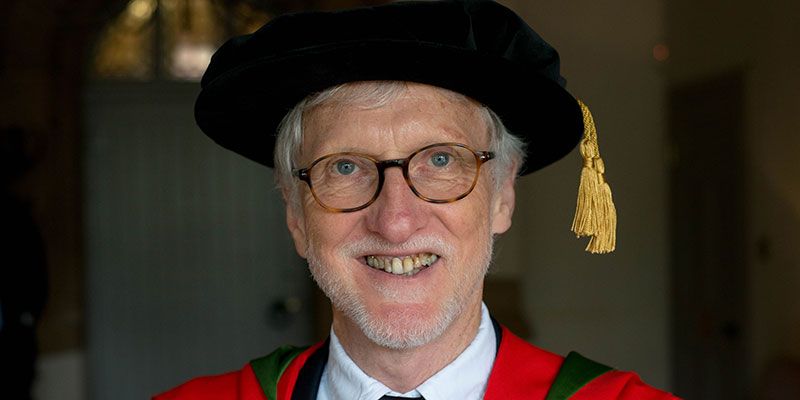Iain William Mattaj

Presentation address by Professor Richard Bayliss
Vice-Chancellor,
Today we honour a distinguished alumnus and leader of an elite global scientific research institute.
Professor Iain Mattaj is Director General of the European Molecular Biology Laboratory (EMBL), the continent’s flagship life sciences research institute. The EMBL is an enterprise vast in scale and ambition: more than 1,600 staff across six sites are studying structural biology, epigenetics, neurobiology, tissue biology and disease modelling. Director General since 2005, Iain has masterminded its research strategy and policy of recruiting the best academics from around the world.
This is work of critical importance. Humanity faces profound challenges associated with ageing, cancer, lifestyle and drug resistance and our understanding of molecular biology – looking at the biological building blocks of living things – is crucial to overcoming them.
Iain arrived in Leeds’s Department of Genetics in 1974 after undergraduate studies in Edinburgh. After gaining his PhD, his postdoctoral career continued in Switzerland. His research has focused on ribonucleoprotein particles, and latterly on the regulation of processes during cell division. He joined EMBL in 1985, becoming Scientific Director in 1999 and will leave a tremendous legacy when he steps down in January 2019.
The leadership of research teams requires more than scientific and managerial skills. Iain has rare talents in diplomacy and supporting people to achieve their potential. He has encouraged many scientists through his thoughtful and scientifically robust approach - whether running his laboratory, at the EMBL or as Editor of the European Molecular Biology Organisation (EMBO) Journal.
I can attest to Iain’s thoughtfulness. As EMBO Editor, Iain rejected my first ever submission to a scientific journal yet advised me that he found the work interesting and important and suggested improvements to the study. While disappointed, I was encouraged by him to persevere and three years later a subsequent work was published in the EMBO.
Iain’s achievements are widely recognized: he is a Fellow of the Royal Society, and the Royal Society of Edinburgh, a Member of Academia Europaea and of the American Academy of Arts and Science.
We are delighted to welcome Iain back, particularly when the Astbury Centre for Structural Molecular Biology is so successfully advancing life science research. William Astbury, a towering figure in our University’s history, would be delighted by the work of the Centre named in his honour and would, I suspect, endorse the honour which we bestow upon Iain today.
Vice-Chancellor, I am delighted to present for the Degree of Doctor of Science, honoris causa, Iain William Mattaj.